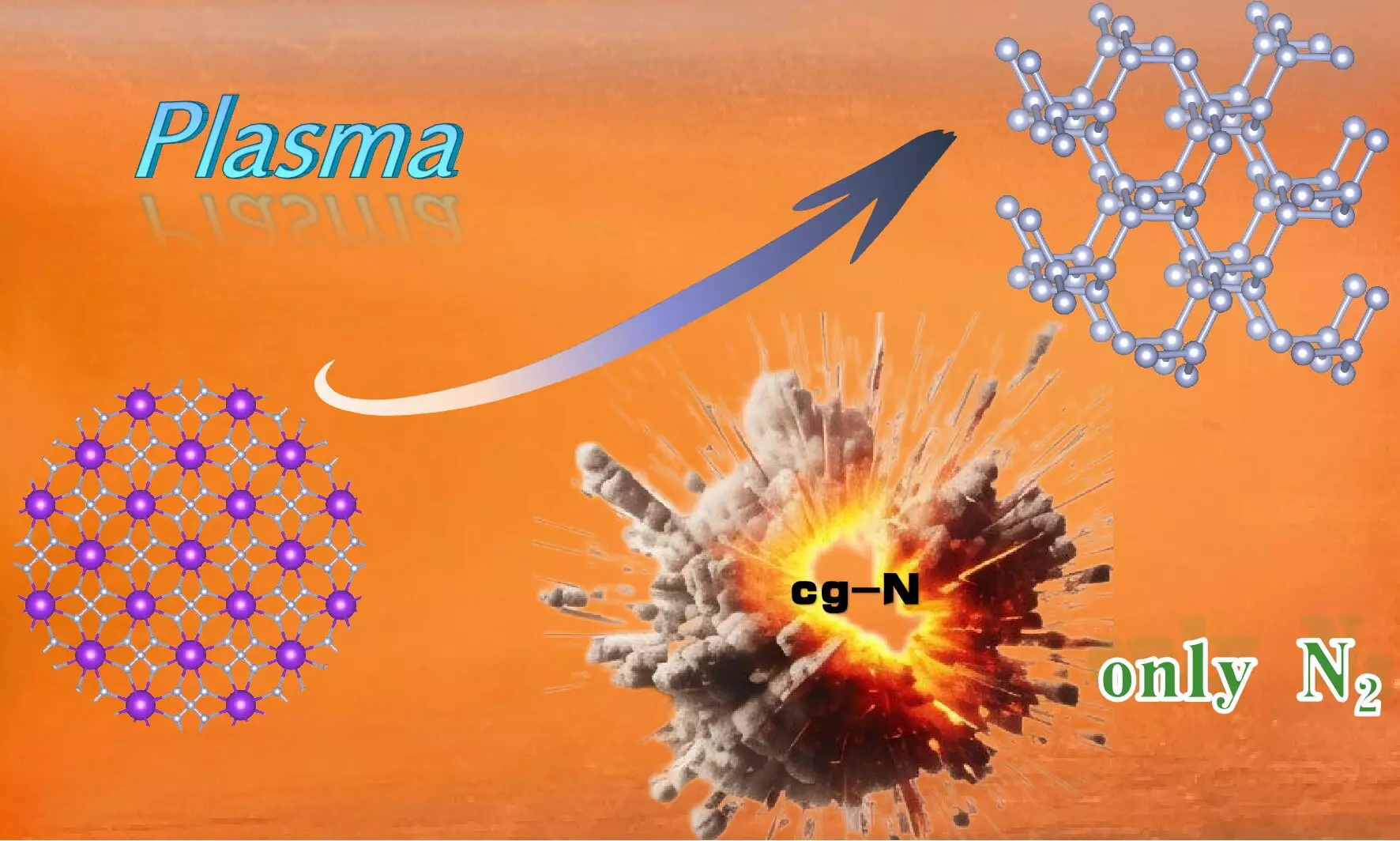Recent advancements in materials science show promise in the synthesis of high-energy-density materials, particularly cubic gauche nitrogen (cg-N). This novel material, derived from pure nitrogen, possesses the unique ability to form N-N single bonds akin to the structure of diamonds, offering potential applications where high energy output and safety are critical. A critical piece of research published in *Science Advances* has been led by Professor Wang Xianlong from the Hefei Institutes of Physical Science, revealing groundbreaking methods to synthesize cg-N at atmospheric pressure.
The Synthesis Process: A New Approach
The innovative approach utilized in this research involves the treatment of potassium azide (KN3) through plasma-enhanced chemical vapor deposition (PECVD). The significance of this method lies in its ability to synthesize cg-N securely and efficiently, addressing longstanding concerns about the explosive nature of traditional high-energy-density materials. By opting for KN3 as a precursor, the research maximizes safety due to its comparatively lower toxicity and explosiveness, while capitalizing on potassium’s powerful electron transfer capabilities.
The study emphasizes that achieving the controlled synthesis of cg-N at atmospheric pressure is pivotal for practical applications. The research team meticulously investigated the stability of cg-N by employing first-principles calculations, assessing various states under different pressures and temperatures. This theoretical foundation proved crucial in revealing surface instability factors which previously hindered the material’s stability at lower pressures.
Experimental findings bolster the theoretical framework, as the thermogravimetric-differential scanning calorimetry (TG-DSC) measurements exhibited that the synthesized cg-N maintained thermal stability up to 760 K. Beyond this threshold, however, the material underwent rapid and intense thermal decomposition, underscoring the delicate balance between stability and the energy-producing potential of cg-N. The unique decomposition of cg-N, which solely releases nitrogen gas, adds an additional layer of safety and environmental friendliness when compared to conventional high-energy materials that can produce harmful byproducts.
As the research illustrates, the development of cg-N opens up new avenues for the exploration of novel high-energy-density materials. This breakthrough not only pushes the boundaries of materials science, but also presents a significant opportunity for safe energy applications across diverse fields. The team’s innovative methodologies serve as a catalyst for future research, with the prospect of developing efficient synthesis methods for other high-energy-density materials at atmospheric pressure.
The synthesis of cubic gauche nitrogen heralds a new era in the field of high-energy materials. Under the guidance of Prof. Wang Xianlong, the successful application of PECVD techniques represents a significant milestone, suggesting that the future of energy-dense materials may indeed be both safe and highly efficient. The implications of these findings could eventually redefine energy applications, paving the way for safer alternatives in technology and industry.


Leave a Reply